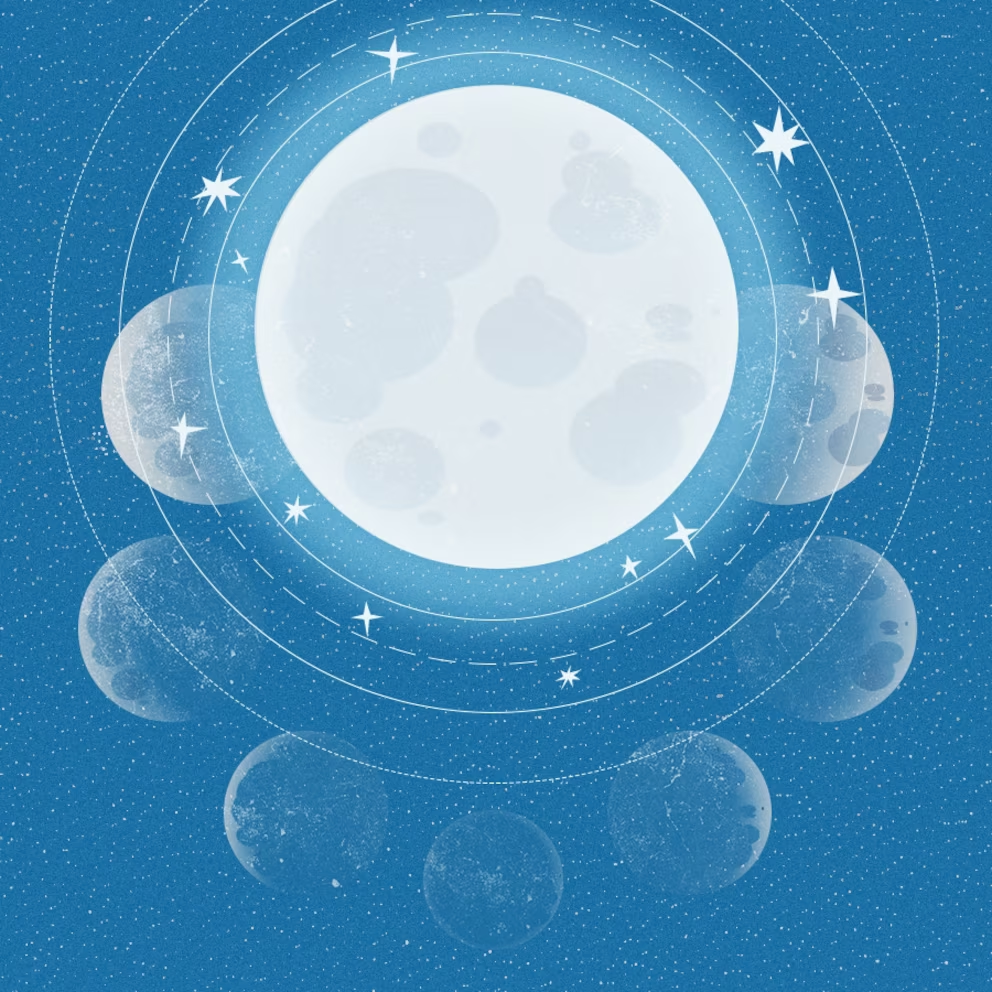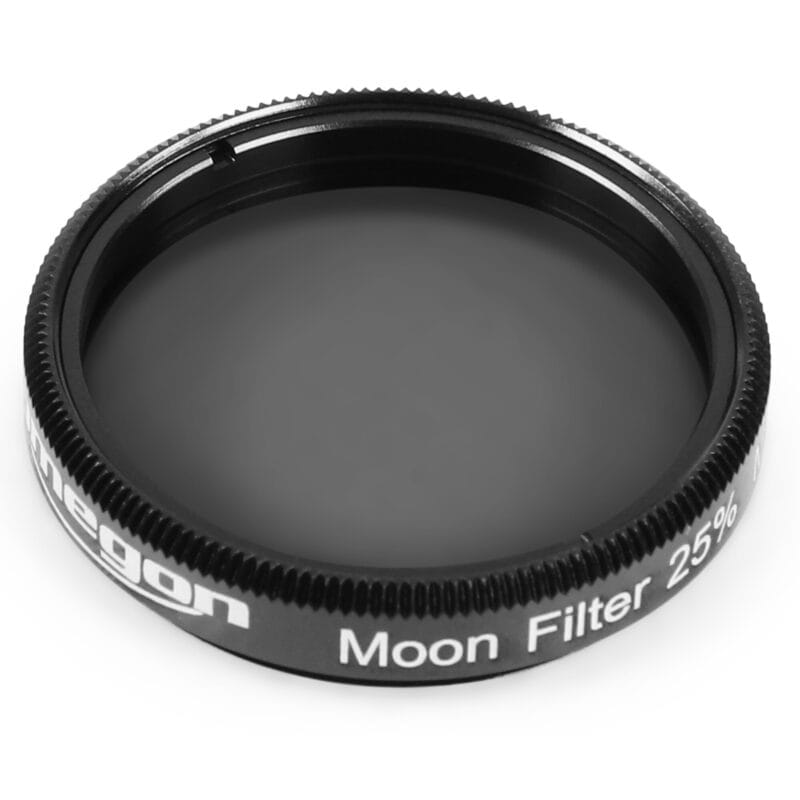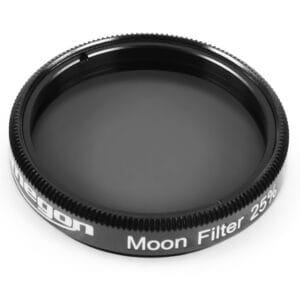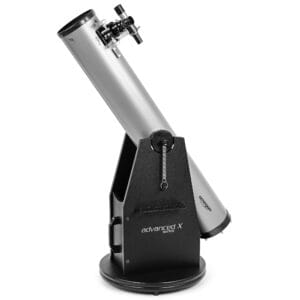The full moon December 2025 falls on the night of Dec. 4 on Dec. 5, right around 00:14 a.m.. Because the peak moment is in the middle of the night, the moon looks completely round on both the evening of December 4 and the evening of December 5. December full moons are always different from those of the rest of the year: the sun is extremely low, and therefore the moon actually climbs high. The result is a harsh, silvery glow that makes trees, roofs and streets light up almost unnaturally!
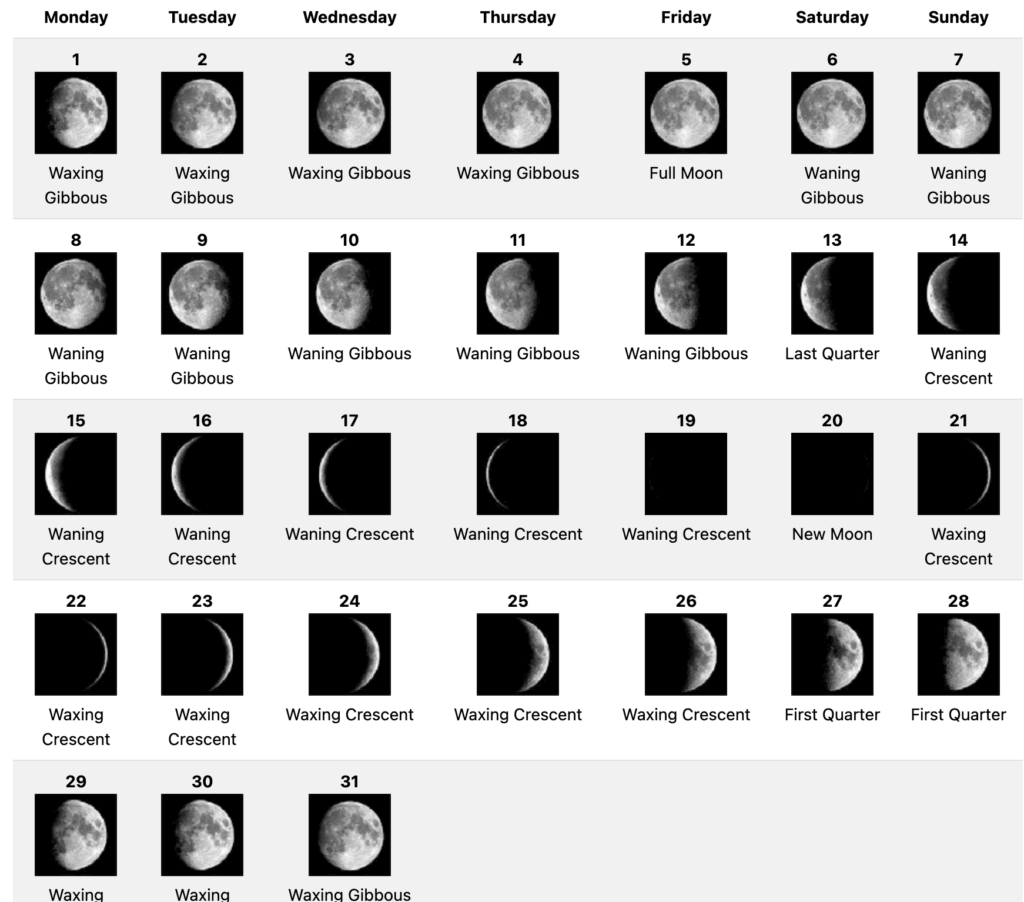
Those who use a smart telescope such as the Seestar S50, DWARF 3 or an ordinary telescope with smartphone adapter, can capture this winter moon beautifully. Even basic equipment shows the large maria (lunar seas) and the familiar craters with striking clarity. It is recommended, however, that you use a moon filter to use; the winter moon is high, bright and without a filter you lose contrast quickly.
Omegon Moon Filter 25% - 1.25″
Omegon Moon Filter 25% - 1.25" dims moonlight and adds contrast, ideal for smaller and medium-sized telescopes.
Why is the December moon called the cold moon?
In the Netherlands and the rest of Europe, we do not usually use traditional ‘month names’ for the moon; those designations come mainly from North American folklore. Nevertheless, they often pop up online and are adopted worldwide. There, the December moon is often called the Cold Moon called December, referring to the beginning of the deeper winter. In the European context, this is especially symbolic: December is the month of longer nights, clear winter skies and low positions of the sun. Some calendars therefore also call this full moon the Long Night Moon, a name perhaps even more fitting in Europe, as the nights around winter are noticeably longer and darker than during the rest of the year.
Astrologically, the full moon December 2025 is in the constellation Taurus. That means it is high in the sky and remains visible for much of the evening. Near the Pleiades (M45), the moon can sometimes form striking conjunctions in December, although the brightness and proximity of the full moon will partially overcast details of that star cluster. Still, such moments are precisely beautiful to photograph with a telephoto lens or smart scope: the combination of bright moonlight and a winter constellation produces a recognizable and atmospheric image.
What does the full moon December 2025 mean for observers?
This full moon is the culmination of the last lunar cycle of the year. Whereas the November moon still fell in the middle of the autumn season, the December moon symbolizes the transition to true winter. The shadows on the lunar surface become almost minimal due to the high phase of the moon; that means the craters show less relief than in other phases. When there are relief is visible, you can see that the moon is not flat, but has a landscape full of depth, height and shadows.
For many beginners, it is a surprise that a full moon actually shows less detail than a half-full one. This is because the sun shines directly on the moon. Shadows disappear and with them the 3D depth you normally see so well in a telescope. Still, a full moon remains impressive, especially because of its brightness and presence. If you stand outside, you will notice that the moon casts shadows as if you were walking in dim daylight, an effect that is especially strong in December, when the air is dry and clear.
When and where can you see the full moon December 2025?
The moon rises on the evening of December 4 and reaches its highest point around midnight. Because of its high winter orbit, it stays above the horizon for a long time, even in the early morning. In the Netherlands and Belgium, you have a chance to view her almost all night, provided the cloud cover is not too bad.
A spot with a clear view of the eastern horizon is ideal for watching moonrise. In December, the moon often has a warm, almost orange glow just above the horizon, purely an atmospheric effect. Compare the rise with the image an hour later: you can see how the color changes from gold to steel blue.
What telescope accessories work well?
A 10 mm eyepiece provides sufficient magnification to sharply discern the moon's large structures. A 25 mm eyepiece is ideal for seeing the entire lunar disk at once. Because the moon is so bright in December, we recommend a moon filter, this prevents glare and helps make subtle details more visible. Those who want to take photographs can use a smartphone mount or a smart telescope that automatically corrects exposure. This is especially useful during a full moon: overexposure is quickly lurking.
Lunar phases December 2025
According to international astronomical sources, the lunar cycle is as follows:
Full moon - December 5, 2025, 00:14 CET
Last quarter - December 12, 2025
New moon - December 20, 2025
First quarter - December 28, 2025
After the full moon, the illumination decreases a little further each night. Between December 7 and 14, you can see the most beautiful shadow transitions, right at the moment when the terminator slowly slides across the surface. That is the time to view fine crater details with a telescope.
An atmospheric end to the lunar year
The Full Moon December 2025 is one of the brightest and most wintry moons of the year. The light is cool and harsh, the shadows are long and the sky is often more transparent than in other seasons. This is the time when even a simple telescope shows what the moon really is: not a white dot, but a world full of textures, lines, craters and soft shades of gray.
Those who want to view the moon with a telescope have several excellent options. A compact Maksutov, such as the Skymax 102, provides sharp, high-contrast detail and is quickly ready for use on a balcony or terrace. If you want especially stable and intuitive viewing, then a Dobson great value for money and quietness in the image, ideal for more details.
But for anyone who really wants to take a step towards photography or ease of use in December, a smart telescope is very interesting. The Seestar S30 is this month even €50 discounted, making this just the right time to get in. The S30 automatically focuses, exposes correctly at full moon and captures craters, maria and conjunctions without any experience. Especially with the bright December moon, where phone cameras and telescopes without a moon filter quickly overexpose, that automatic exposure works remarkably well. It's a compact, quiet telescope that you can have up and running in five minutes; that's all you need for this full moon.
The DWARF 3 goes one step further technically but more is possible..... but those who mainly want to photograph the moon and bright objects will have more than enough with the S30. That makes the temporary December discount all the more attractive: it's a rare time when you get a smart telescope at an entry-level price, while its performance on the moon is at its best precisely at this time of year.
Whatever telescope you use: a moon filter remains important, especially with this bright winter moon. It removes a soft portion of the light, leaving subtle textures visible. A 10 mm eyepiece gives nice magnification for craters along the rim, while a 25 mm eyepiece perfect for seeing the entire lunar disk in a calm, steady image. Those wishing to photograph from a tripod can easily use a smartphone holder to position the camera exactly behind the eyepiece.
The Full Moon December 2025 closes out the year with a brightness that occurs only once a year. Will you look with the naked eye, binoculars or a telescope or will you opt this year for a smart telescope such as the Seestar S30 with €50 December discount, then start the new year with one of the most beautiful winter images you can capture!

